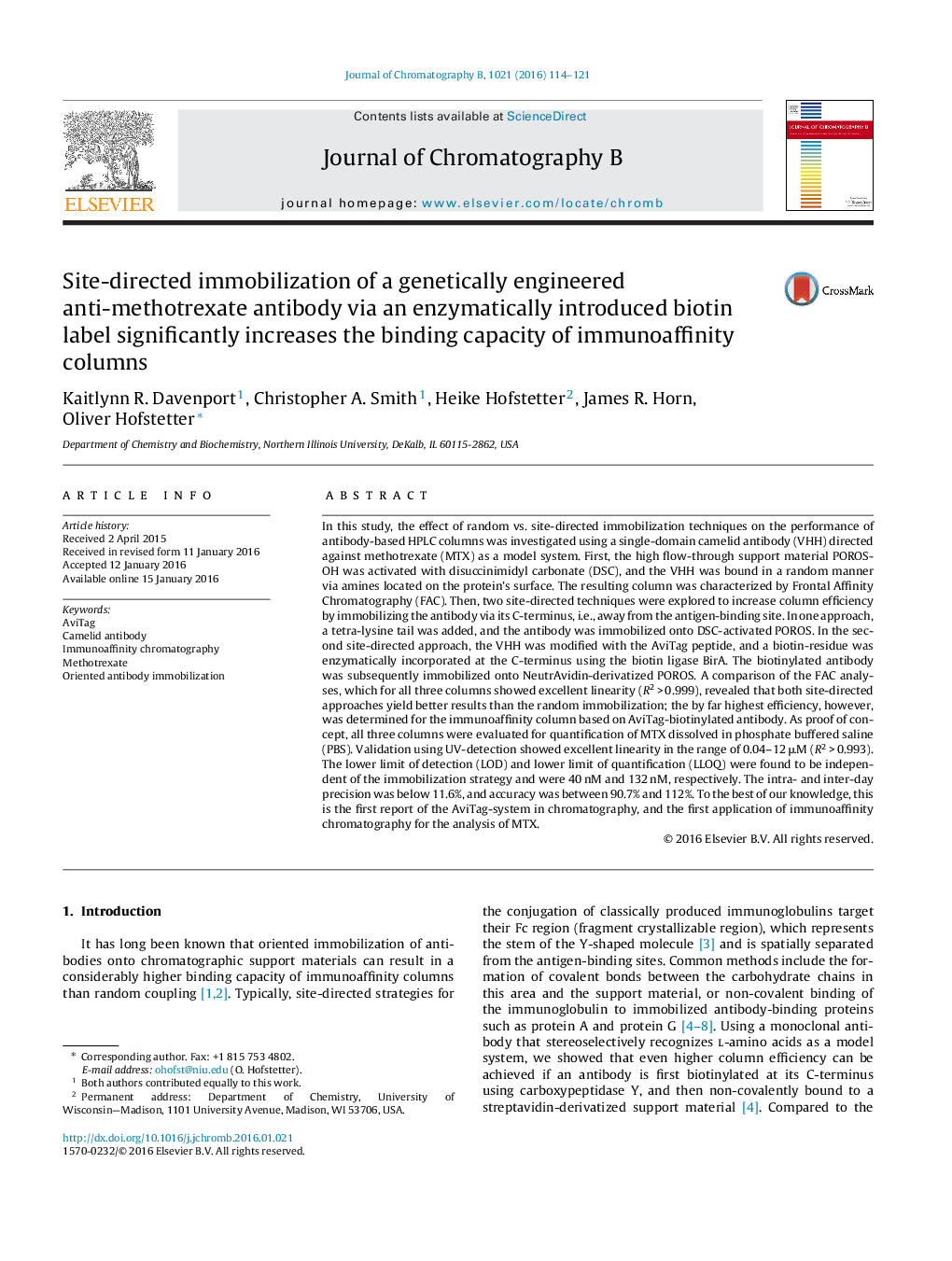| کد مقاله | کد نشریه | سال انتشار | مقاله انگلیسی | نسخه تمام متن |
|---|---|---|---|---|
| 1211940 | 1494034 | 2016 | 8 صفحه PDF | دانلود رایگان |
• VHH-based immunochromatographic separation of methotrexate was demonstrated.
• VHH variants contained a mutation that served as a pH-switch.
• First use of AviTag technology for the production of affinity chromatography stationary phases.
In this study, the effect of random vs. site-directed immobilization techniques on the performance of antibody-based HPLC columns was investigated using a single-domain camelid antibody (VHH) directed against methotrexate (MTX) as a model system. First, the high flow-through support material POROS-OH was activated with disuccinimidyl carbonate (DSC), and the VHH was bound in a random manner via amines located on the protein’s surface. The resulting column was characterized by Frontal Affinity Chromatography (FAC). Then, two site-directed techniques were explored to increase column efficiency by immobilizing the antibody via its C-terminus, i.e., away from the antigen-binding site. In one approach, a tetra-lysine tail was added, and the antibody was immobilized onto DSC-activated POROS. In the second site-directed approach, the VHH was modified with the AviTag peptide, and a biotin-residue was enzymatically incorporated at the C-terminus using the biotin ligase BirA. The biotinylated antibody was subsequently immobilized onto NeutrAvidin-derivatized POROS. A comparison of the FAC analyses, which for all three columns showed excellent linearity (R2 > 0.999), revealed that both site-directed approaches yield better results than the random immobilization; the by far highest efficiency, however, was determined for the immunoaffinity column based on AviTag-biotinylated antibody. As proof of concept, all three columns were evaluated for quantification of MTX dissolved in phosphate buffered saline (PBS). Validation using UV-detection showed excellent linearity in the range of 0.04–12 μM (R2 > 0.993). The lower limit of detection (LOD) and lower limit of quantification (LLOQ) were found to be independent of the immobilization strategy and were 40 nM and 132 nM, respectively. The intra- and inter-day precision was below 11.6%, and accuracy was between 90.7% and 112%. To the best of our knowledge, this is the first report of the AviTag-system in chromatography, and the first application of immunoaffinity chromatography for the analysis of MTX.
Journal: Journal of Chromatography B - Volume 1021, 15 May 2016, Pages 114–121
